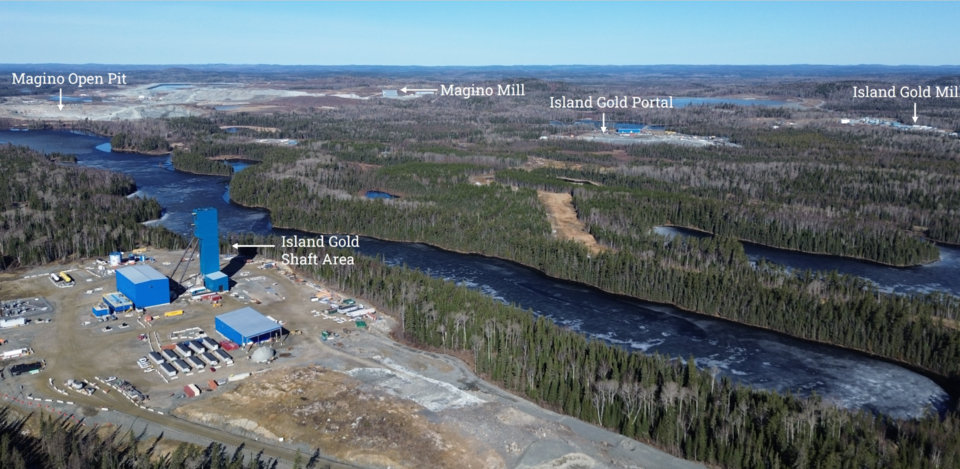There are substantial savings to be had for Alamos Gold in its acquisition of a neighbouring mine outside Dubreuilville.
This spring, the Toronto gold company announced the friendly acquisition of Argonaut Gold and its newly minted Magino Mine, which is adjacent to Alamos’ prolific Island Gold Mine.
The big draw for Alamos is the huge exploration upside on both properties to grow gold reserves on the Michipicoten greenstone belt. But Alamos will also have access to Argonaut’s newer and larger capacity processing mill.
Island Gold is undergoing a third wave of expansion since 2017 that would involve upgrading its on-site processing plant and expanding its tailings management area.
With a single mill and tailings dump serving both deposits, it means Alamos can drop plans to expand its own mill and tailings facility.
That represents $140 million in capital savings over the life of mine and savings of $25 million in operating costs a year.
Alamos management dropped that tidbit during an April 25 webcall of its promising first-quarter results of its 2024 fiscal year.
Once the Argonaut deal closes in July, a reconfigured map of Alamos’ holdings will show that Argonaut’s mill is situated smack dab in the middle of a larger property package.
The Magino and Island Gold deposits are less than 300 metres apart. The truck haul distance from Island Gold to Magino’s mill is two kilometres.
Alamos president-CEO John McCluskey said adding Magino to the mix makes Alamos a “stronger company.” The aim is to combine the two operations into one of the largest, low cost and profitable mines in Canada.
Alamos believes there are opportunities for further mine expansion down the road. Near term, picking up Magino is expected to increase company-wide gold production to more than 600,000 ounces a year and possibly more than 900,000 ounces annually at some point.
Along with the assets, Alamos will be inheriting $275 million of Argonaut debt. But CFO Greg Fisher said the company is in good cash position with a strong balance sheet that it can continue to fund its growth plans at its other mine projects.
With construction starting in 2022, the Island Gold expansion is geared to boost mine production from 1,200 tonnes per day to 2,400 tonnes. It involves sinking a new shaft, building a new paste plant and — until the Magino acquistion — expanding the mill to support the higher mining rates.
Once the project wraps up in 2026, Island Gold will shift from trucking mineralized ore and waste rock up a ramp to skipping material to surface via the new shaft.
As of the end of March, Alamos said 57 per cent of US$756-million budget has been spent.
With gold prices exceeding US$2,300 an ounce, Island Gold is funding its own expansion and, looking beyond 2026, is expected to generate significant free cash flow.
Picking up Magino is Alamos’ second major acquisition this year. In January, the company announced it was acquiring Orford and its Qiqavik gold project in Quebec. That transaction closed in April.
Coming off a record performance in 2023, McCluskey said in the webcall that Alamos is off to a strong start in 2024 and is well situated to reach this year’s gold production targets.
Thanks to high gold prices, Alamos posted a record quarterly revenue of $277.6 million for the first stanza of this year.
The strong ongoing cash flow is helping to finance the expansion at Island Gold. Management said it's generally happy with the financial and operational performance its seeing so far.




